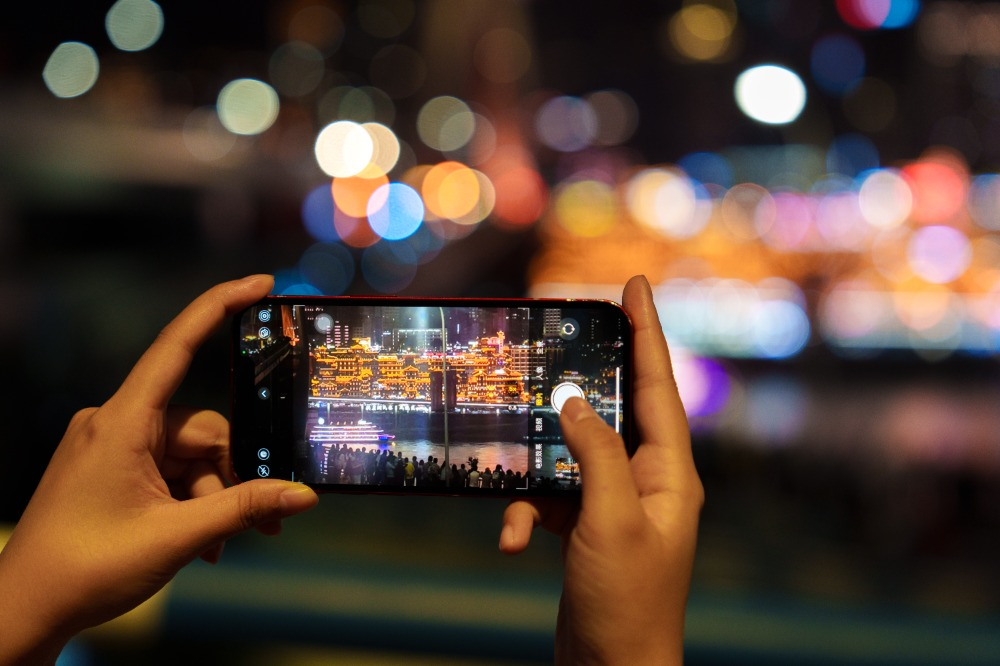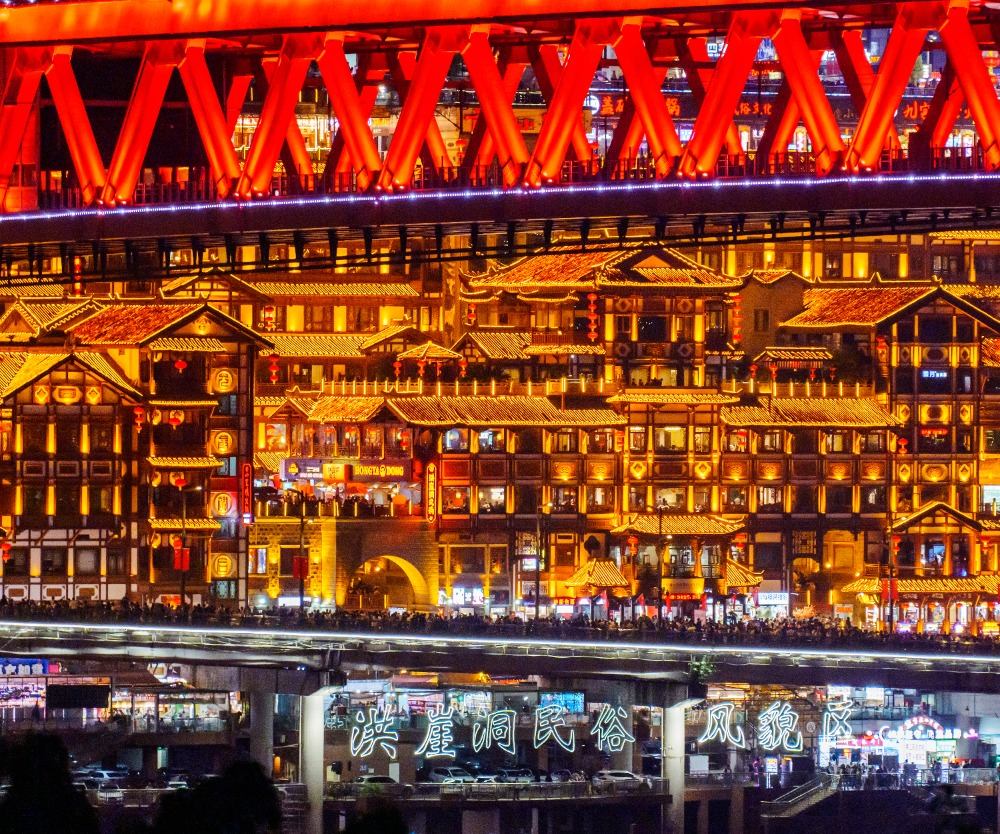Chongqing unveils plan to create stunning nighttime cityscape
2024-10-11 15:00:57
CHONGQING (CQNEWS) -- The Special Plan for Urban Landscape Lighting in Chongqing’s Central Urban Area (2022-2035), which took two years to develop, has recently been launched, according to the Chongqing Urban Management Bureau on October 9. Relevant officials provided insights into the key features of this Plan.

Four major zones for landscape lighting
“The planning process began in April 2022 and underwent assessments by municipal departments and experts by June 2023, concluding with a review by the city’s planning committee in December,” said Chuan Yong, an official from the Lighting Division of the Chongqing Urban Management Bureau. He added that planners had conducted site visits to cities like Beijing and Shanghai in February and March of this year to further refine the Plan.

The Plan aims to create a distinctive nighttime identity for the mountain city, blending natural beauty with the cultural essence of the Bayu region and an international flair. It seeks to establish first-rate landscape lighting nationwide, highlighting the city’s functions for nighttime leisure and tourism while supporting Chongqing’s development as an international consumption hub.
Following the principles of “broad perspective, expansive field of view, landmark significance, cohesion, and immersive experience,” the Plan outlines four key landscape lighting zones: the Core Exhibition Area (along the four banks of the Yangtze River and the Jialing River), the Vibrant Development Area, the Transition Lighting Area, and the Control Area, covering an area of 2,107 square kilometers. The Plan also specifies technical controls for brightness, color temperature, dynamic lighting, and other aspects, creating a differentiated and energy-efficient lighting scheme that adapts to varying brightness needs.
Emphasizing boundaries and landmark buildings
According to the Plan, each zone along the four banks of the Yangtze River and the Jialing River will have its unique nighttime character. For instance, the area around Chaotianmen and Jiefangbei will present a brilliant and bustling urban scene, while Jiangbeizui is envisioned as a Bayu jewel and dynamic stage. The Danzishi-Longmenhao-Shibanpo Yangtze River Bridge areas will be known for their vibrant and colorful light displays.
To bring these concepts to life, the Plan aims to integrate the unique characteristics of the mountain-water city, proposing improvements to the urban riverbanks, water edges, and major bridges to enhance the city’s lighting framework, Chuan Yong explained. He added that effective boundary lighting will provide adequate illumination while distinguishing spaces with different functions, guiding the viewer’s line of sight.
For example, the Yuzhong Peninsula will feature dynamic lighting, using projectors in riverbank areas to enhance the skyline and architectural design, emphasizing the harmony between nature and buildings.
Additionally, the Plan emphasizes the importance of highlighting landmark buildings and key areas, creating exceptional lighting points, and controlling brightness levels and color temperatures for riverside structures and neighboring high-rises, crafting a clear silhouette of modern architectural nightscapes.
“The Grand Theatre can create a ‘grand scene’ experience through beam lights and projectors, connecting with the night views at Chaotianmen Square. Beibin Road will complement the dim areas along the riverbanks with decorative lighting, optimizing the lighting design of riverside commercial buildings in harmony with the Chaotianmen area,” Chuan Yong noted.
47 nightscape viewing points planned
To enhance the public’s nightscape experience, the Plan has designated 47 prime viewing points throughout the city. These will offer multiple perspectives, allowing both locals and tourists to fully appreciate the charm of a ‘city that never sleeps’'. Notable viewpoints for observing the Yuzhong Peninsula include One Tree Hill, Laojundong, Iron Mast, Huangjueya, and Tushan Temple. By enhancing visual sightlines, the plan aims to achieve a balanced urban aesthetic that is rich in layers and dimensions. Additionally, viewpoints such as Tushan, Wangjiang Pavilion, and the Golden Eagle will offer perspectives on the beautiful scenery of the two rivers and the four river banks, employing lighting to create a dynamic image of the river intersection area.
The Plan is deeply aligned with Chongqing’s ambition to become an international consumption center and enhance its allure as a vibrant city that never sleeps. It emphasizes using landscape lighting to boost urban vitality, economic growth, and local culture. Specific strategies for nighttime lighting in business districts are outlined, including balancing visibility with advertising and branding.
The Plan requires that large commercial districts integrate the characteristics of commercial spaces, balancing the visual relationship between landscape lighting in advertising signage and the buildings themselves. This involves making the most of natural light within the commercial areas to enhance the nighttime shopping atmosphere. In contrast, the night market neighborhoods, or night markets, should primarily focus on showcasing a lively urban vibe through atmospheric lighting. The lighting tones in these areas should predominantly feature warm yellows, reflecting a cozy urban lifestyle.
In addition to aesthetic considerations, the Plan emphasizes sustainable lighting practices. It calls for a scientific approach to managing lighting schedules based on weather conditions and encourages the use of green, energy-efficient products. Residential area lighting must meet standards for brightness and minimize light pollution, ensuring it doesn’t disrupt residents’ daily lives. Measures will be taken to shield residential buildings from direct light, with appropriate spacing maintained between lighting fixtures and windows. (Translated by Yuki, Fathom Language Limited)
Editor:江夷玮
 手机阅读分享话题
手机阅读分享话题